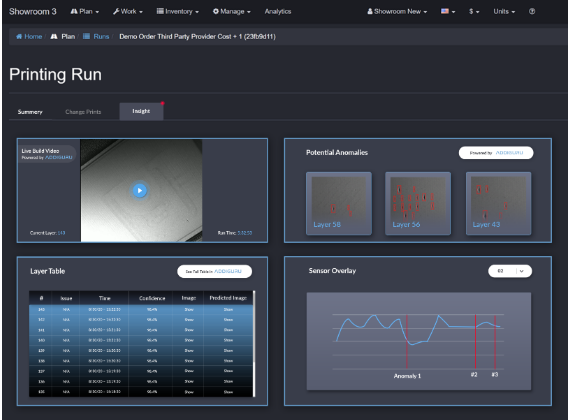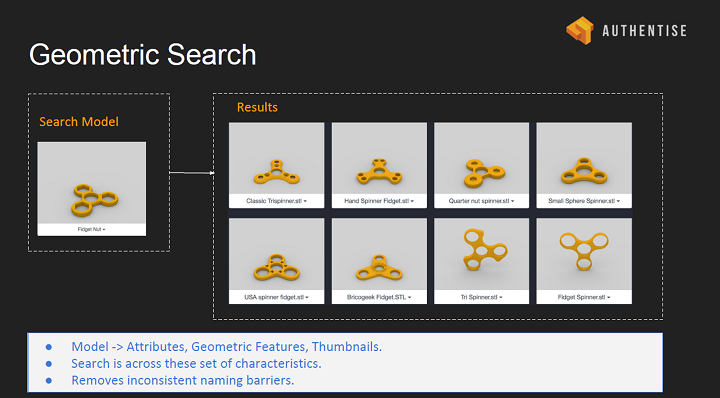In a recent interview, Andre Wegner, CEO and Co-Founder of Authentise, highlighted that the company’s software achieved a reduction in the time it takes to process an order by 80 percent, and reduced build preparation time by more than 95 percent on average. In addition, it provided over 3x ROI in just 8 months. After this initial wave of success, we returned to speak with Andre to reflect on what it takes to deliver this type of ROI in additive manufacturing.
Clearly, Authentise’s integration of your system into Boeing has been a huge success. One major improvement for Boeing has been their time saved in both pre-production and production. How was this calculated, and how did your systems help improve it?
Andre: We analyzed a number of the challenges Boeing was facing, such as the complexities involved in submitting an order to Boeing Additive Manufacturing (BAM), which was a complex task. In addition, converting the order to a production plan proved difficult. We spent a lot of time with the new users to understand any adjustments or customizations they needed for the system to be of greatest use to them. We had a good idea of what to include given the work we did prior to Boeing purchasing the software, but we confirmed those designs before we went into a build cycle. In the end, I think we tracked 30-40 KPIs to understand total performance, which showed process savings of 80-95%. Initially we’d targeted 80, but numbers were so good that we stopped early.
How did you go about identifying and resolving some specific areas in which your system could gain maximum efficiency savings?
Andre: Once the integration product began, we realized the situation. Boeing is where they are today for many reasons, but they aren’t perfect. Areas we identified that needed work was the pre-production process and process time. As mentioned before, our system fixed these issues with efficiency. This reduced process to order time by 80% and decreasing build preparation time by 95%. This has allowed us to take it one step further, creating features that enabled them to track their materials more efficiently and manage pre-production workflows to streamline the whole process.

Alert Details available in AMES Build Detail page, including video of image feed, detected anomalies, layer detail table + overlay of sensor data captured by Authentise.
What have been some challenges faced in helping Boeing increase their ROI?
Andre: Every opportunity comes with its fair share of challenges, including Boeing. We were excited to go in and take on these challenges. One of the more significant issues we encountered was that the Boeing-wide IT systems weren’t designed for additive manufacturing. That meant they couldn’t deal with the variability in additive production, complexities of batch-single-batch processing, and material genealogies, among other issues. For Boeing engineers, submitting an order to BAM was convoluted and protracted. Those were challenges, but they were also opportunities and partially why we were able to achieve 80-95% time savings in just a few months. In addition to this, their base systems were undefined and relied on head knowledge and paper trails. Knowledge wasn’t transparent, therefore making it untransferable. I think the last umbrella the issues fell under was that Boeing had unintentionally created information silos, making real-time data difficult to transfer between departments.
As you look to the future, what are some unexplored opportunities with the system you’d like to pursue?
Andre: I’d have to say I’m most excited about expanding the capacities we can offer to others. As we continue to work alongside Boeing, we’re continuously learning. That results in new features and upgrades almost all the time. Ultimately, the strong relationship and product we’ve developed together also mean that we’re looking to deploy the solution beyond additive: Many other business units need efficient, data-driven systems to manage their most agile processes. In effect, that’s what additive is.

Authentise Geometric Search.
Boeing is an important example, but how might implementation of Authentise solutions differ in their case from, say, a company in the automotive or industrial sectors?
In general, the process will remain 95% the same. Naturally, each sector has its own specific requirements: Medical releases are restricted by FDA approvals, so there’s more of a rush to get all the customizations for the client in right at the beginning. However, we designed the platform to be cross-industry for all to use efficiently. Therefore, ensuring aMES can be a tool to be used by all.
Is Authentise suitable for companies that are on the small-to-medium scale, as well? If so, how would they go about implementing it?
We have some great SME customers, including in the service provider market. Job shops are in a way central to our performance because they push us ways the corporates don’t. So again: 95% the same, but the emphasis changes depending on the type of users. Corporates tend to focus on capturing data, while for service bureaus, quoting is an important feature. Either way, we have customers covered, and our unique modular setup means that we can easily switch in and out features – either our own of those third-party algorithms of our partners or those the specific customer wants to use.
How do you see your products evolving with the market as AM is adopted on a broader scale?
We spoke about this in our recent recruitment drive. There’s a lot about additive that excites us: the move from geometry-based design communication to discussing designs in terms of intent and allowing geometric design algorithms to do their work. There’s much more opportunity for AI too, now that we’re in a position to track the entire production process and its related data: quality determination, predicting parameters and more. Ultimately, we will take our current learnings and future ones about how to wrangle the digital thread in production outside of additive – and that too is exciting.
Subscribe to Our Email Newsletter
Stay up-to-date on all the latest news from the 3D printing industry and receive information and offers from third party vendors.
You May Also Like
Wisconsin’s Evology Adds Digital Sheet Forming to Service Roster
Evology, a service bureau based in Wisconsin and specializing in serving strategic sectors like aerospace and defense, has added digital sheet forming (DSF) to its repertoire of manufacturing capabilities. Evology...
Boring Company Alum Score $9M for Advanced Composites Manufacturing
Layup Parts, a Huntington Beach, CA-based startup specializing in on-demand manufacturing of parts made from composites, has received $9 million in its latest financing round. Founders Fund, the VC firm...
Industrial Giant Ingersoll Rand Leads $19M Round Backing Inkbit’s AI-Driven 3D Printing
Inkbit, the Massachusetts-based original equipment manufacturer (OEM) of multi-material, AI-integrated 3D printers, has closed a $19 million financing round. Ingersoll Rand, a US giant in the industrial equipment sector, led...
3YOURMIND & Nigerian Oilfield Services Firm RusselSmith Team Up on 3D Printed Part Inventory
3YOURMIND, the German and U.S. software services provider specializing in digital inventory platforms for additive manufacturing (AM), has partnered with Nigerian oilfield services firm RusselSmith to digitize spare part files...
































